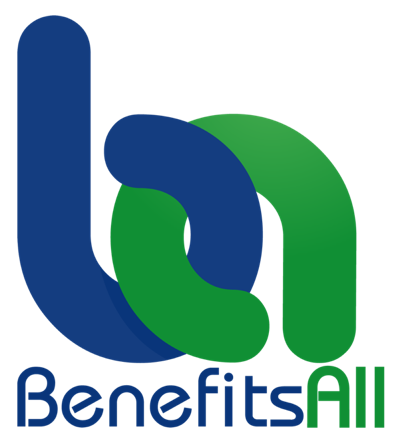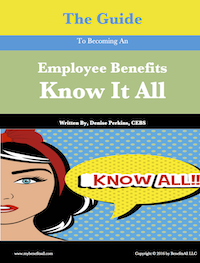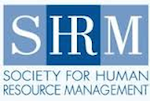How to Assist With a Health Insurance Claim Dispute
March 16, 2014

Employee benefits professionals routinely assist employees in resolving disputes over denied or improperly paid health insurance claims. Next to the annual open enrollment and benefits fair, these encounters are the most one-on-one contact benefits pros have with employees. Therefore it is extremely important that these interactions are handled with professionalism and understanding.
To make sure that happens create a checklist or guide you can use every time you assist with a claim dispute. You can use an existing checklist like the one from ehow and add to it. For example, include a first step on how to prevent a claim dispute from happening and a final step of filing an appeal with the state department of insurance. You can also share these customized guides with employees, in the form of a brochure, as part of the new hire benefits package, as a newsletter article or on the company website.
Creating a claims dispute resolution guide or checklist is not difficult. Working with an upset and confused employee is. Therefore, it is important to know what to expect and establish some guidelines and expectations for the employee and you.
What to Expect From An Employee Disputing an Insurance Claim
- Expect them to be upset
- Expect them to talk too fast
- Expect them to leave out relevant information
- Expect them to want you to agree with them
- Expect them to want an immediate resolution
Guidelines for Assisting an Employee With an Insurance Claim Dispute
- Don't speculate as to why the claim was not paid
- Don't promise that the claim will be paid
- Don't agree or disagree with anything the employee has to say
- Do ask the employee to fill out a HIPAA Authorization form
- Do gather as much information about the claim as possible including date of service, name of treating physician, name and full address of medical facility/doctor's office, type of service, new or continuing treatment
- Do set aside a time to contact your designated insurance company representative for assistance
- Do closely review the Appeal procedures of the insurance plan document for procedural reference and appeal time limits
- Do follow up with the employee at least once daily with the status of your intervention
- Do require the employee to contact the medical provider’s billing office to inform them of the claim dispute and ask them not to send the claim to a collection agency
Aside from the guidelines, you follow, it is important to recognize that the employee is upset. You can acknowledge their feelings, but don’t make promises you can’t keep because you want to make them feel better.
My technique: I understand that these insurance claims issues can be frustrating. Also, those Explanation of Benefits (EOB) statements can be difficult to understand. I am going to ask a few questions just so that I can get a clear understanding of what we are dealing with before I contact my plan representative. I may ask you a few things that are obvious or that you already told me; I just want to be very clear on all of the details. So let’s try to get this issue resolved. Also, let’s agree that what we are trying to resolve is to make sure that the plan paid everything that it was supposed to pay in accordance with the policy.
Learning From Each Claim Dispute Intervention
Employee benefits professionals often complain about employees not taking the time to read and understand their health and retirement benefits package. Assuming all of your benefits communications are understandable is a big mistake. Every instance an employee seeks your help is an opportunity to improve the way you design and communicate your benefits program.
Assisting employees with insurance claim disputes is important for several reasons, including but not limited to:
- It is an opportunity to help an employee with a specific need
- It is an opportunity to re-educate employees about plan benefits
- It is an opportunity to audit the claims processing procedures of the insurer or third party administrator
Other Considerations
You really need to be on your toes when assisting with an insurance claim dispute. You have to determine the facts of the specific claim at hand. At the same time, you have to manage the emotions of the affected employee. Added to that, you have to consider other issues that may come up during this process.
Dealing with a medical provider/facility insurance billing office. On of the first steps in assisting an employee with a claim dispute is to contact the billing office of the medical provider. The employee should make the call. They can do this in your presence or on their own. The purpose of the call is to inform the billing office that a claim is in dispute and that it is currently being investigated. Ask that the claim not been sent to a collection agency and ask the person their understanding of why the claim was not paid by the insurer.
Fewer doctors have in-house billing operations; most outsource this function. Contact the medical provider or medical facility to inquire who handles their insurance billing and call that person.
Dealing with a collection agency. Many employees will wait until a medical claim has been sent to a collection agency before they seek your assistance. Often an employee thinks that they can handle the matter alone. However, some provider billing offices have a fixed schedule for submitting a claim for collection if the bill is outstanding. They send the claim to collections before the employee can resolve the matter on their own.
Not eligible for benefits. It is a hard pill to swallow for employees but sometimes a claim dispute is not decided in their favor for the simplest of reasons. Explore these reasons first by reviewing the claim Explanation of Benefit (EOB) statement the employee provides to you and the plan document.
The medical services required preauthorization by the insurer before receipt
They or a dependent is not eligible to receive a benefit because of age, reaching the maximum allowed benefit, using a non-participating provider, etc.
Unique plan designs.
Insurance plans often have standard benefits that employers choose from. But when an employer requests a unique benefit that is not part of a standard insurance contract, this language needs to be added to the claims system as an override so that claims for this unique benefit are not denied.
For example, an insurer offers all of its clients a particular plan with a particular plan design and network of providers that has a $1,000 deductible, 30%, coinsurance and $35 office visit copay. You, the employer, request the same plan, but you change the coinsurance amount to 20%. Sounds like a minor change (20% instead of 30%). However, that insurer has to update several of its computer systems and include special instructions in its claims systems to make sure your group’s claim process correctly
When to Bow Out of a Dispute
Most claim disputes are resolved within a few, minutes, hours or days. But some are not. Once you have done all you can to assist an employee with a claim issue and they remain unsatisfied with the result, it’s time they submit a formal appeal. The plan’s appeal process is outlined in the health plan document. Employees may also contact their State Department of insurance to appeal a claim.
Assisting employees with insurance claim disputes requires more than knowledge of benefit plans. It requires empathy and patience, and the ability to address oddball situations.
blog comments powered by Disqus


 Denise Perkins
Denise Perkins




